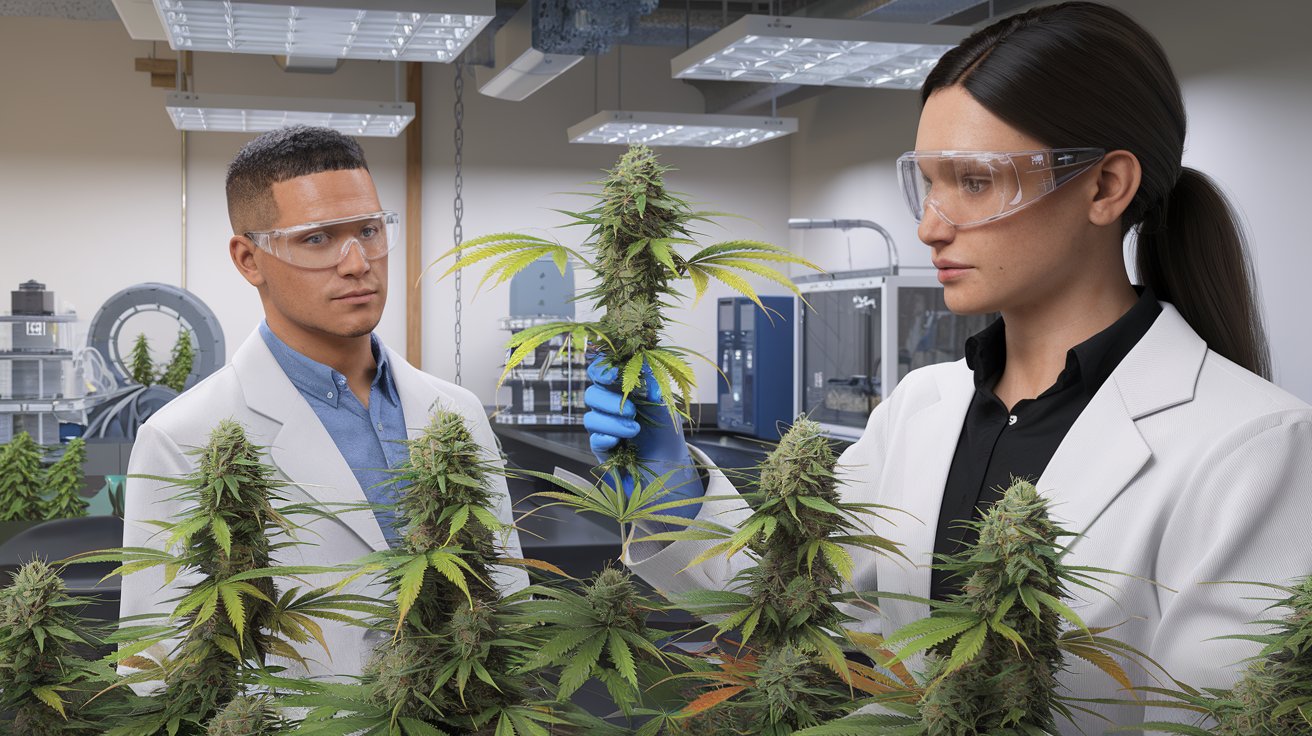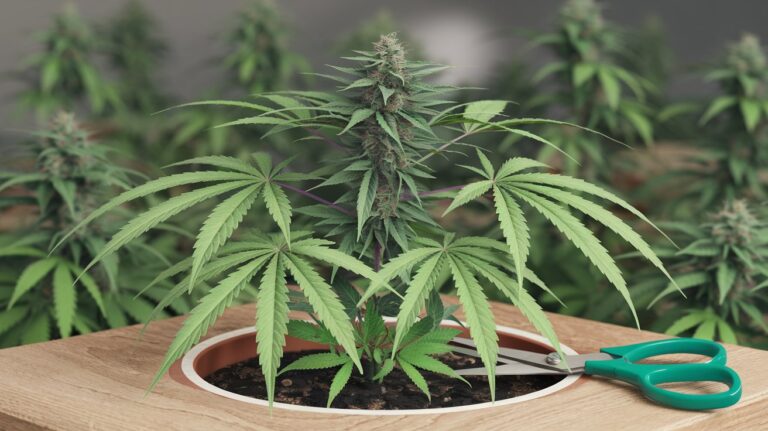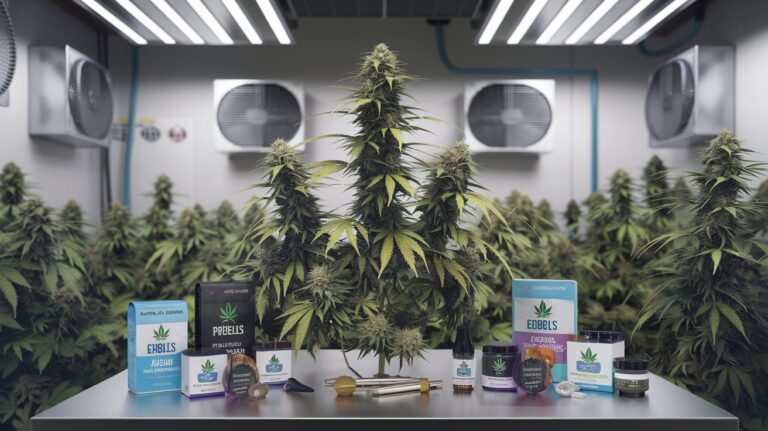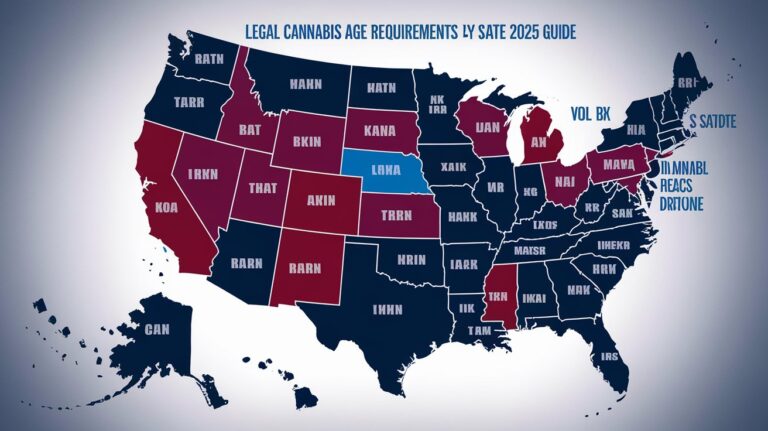Cannabis Testing Requirements Explained: 2025 US Guide
Understanding cannabis testing requirements is essential for businesses operating in the legal cannabis industry across the United States. In 2025, comprehensive testing protocols ensure product safety, potency accuracy, and regulatory compliance. This guide explains mandatory testing procedures, laboratory standards, and compliance requirements that every cannabis operator must follow to succeed in today’s regulated market.
Overview of Cannabis Testing Requirements in 2025
The United States cannabis testing regulations have evolved significantly, with each state implementing comprehensive testing protocols for all cannabis products. As of 2025, over 38 states with legal cannabis programs require mandatory testing for potency, pesticides, heavy metals, residual solvents, and microbial contaminants. These requirements ensure consumer safety and maintain market integrity across the industry.
Federal oversight has increased through agencies like the FDA and USDA, creating more standardized approaches to cannabis product testing. States must now align their testing requirements with federal guidelines while maintaining their specific regulatory frameworks. This dual oversight system has resulted in more robust testing protocols that protect consumers while enabling interstate commerce opportunities for compliant businesses.
Mandatory Testing Categories for Cannabis Products
All cannabis products must undergo five primary testing categories before reaching consumers. Cannabis testing labs must verify potency levels, ensuring THC and CBD concentrations match product labels within acceptable variance ranges. This testing category includes analyzing all major cannabinoids present in the product, providing consumers with accurate dosage information for safe consumption.
Safety testing encompasses four critical areas: pesticide screening, heavy metals analysis, residual solvent detection, and microbial contamination assessment. Each category has specific limits established by state regulations, with California cannabis testing regulations serving as a model for many other states. Products failing any safety test cannot enter the legal market until remediation or disposal occurs according to regulatory protocols.
Potency Testing Requirements
Potency testing measures cannabinoid concentrations including THC, CBD, CBG, CBN, and other active compounds. Cannabis testing SOP requires laboratories to use validated analytical methods like HPLC or UPLC-MS/MS for accurate quantification. Results must fall within ±15% of labeled values for flower products and ±10% for manufactured products to meet compliance standards across most states.
Contaminant Screening Protocols
Contaminant screening identifies harmful substances that could pose health risks to consumers. Pesticide testing screens for over 60 prohibited substances, while heavy metals testing focuses on lead, cadmium, mercury, and arsenic levels. Cannabis testing labs Los Angeles and nationwide facilities use sophisticated instrumentation like LC-MS/MS and ICP-MS to detect contaminants at parts-per-billion levels, ensuring products meet strict safety standards.
Laboratory Accreditation and Standards
Cannabis testing laboratories must obtain proper accreditation to perform regulatory testing. ISO accreditation through ISO/IEC 17025 standards has become the gold standard for cannabis testing facilities, ensuring laboratories maintain quality management systems and technical competence. This accreditation process involves rigorous evaluation of laboratory procedures, equipment calibration, personnel qualifications, and quality control measures.
State regulatory bodies require laboratories to renew accreditation annually and undergo regular audits to maintain compliance. Cannabis testing labs near me searches often prioritize accredited facilities because these laboratories provide reliable, legally defensible results. The accreditation process includes proficiency testing, where laboratories analyze blind samples to demonstrate analytical accuracy and precision consistently.
Sample Collection and Chain of Custody
Proper sample collection ensures test results accurately represent entire product batches. Distributors must follow representative sampling procedures outlined in state regulations, collecting samples from multiple locations within each batch according to statistical sampling plans. Sample sizes vary by product type, with flower requiring larger samples than concentrates due to natural cannabinoid distribution variations.
Chain of custody documentation tracks samples from collection through testing completion. Each transfer requires detailed documentation including timestamps, personnel signatures, and condition assessments. Cannabis product testing facilities implement secure sample storage systems with temperature monitoring and access controls to maintain sample integrity throughout the testing process.
Sampling Procedures by Product Type
Different cannabis products require specific sampling techniques to ensure representative testing. Flower products need stratified sampling from multiple locations within the batch, while edibles require homogeneous sampling to account for ingredient mixing variations. California cannabis testing labs have developed standardized procedures that many other states have adopted for consistent sampling across the industry.
Documentation and Tracking Requirements
Comprehensive documentation accompanies every sample throughout the testing process. Chain of custody forms must include batch identification numbers, collection dates, sample quantities, and handling conditions. This documentation becomes part of the permanent record and must be maintained for regulatory inspection purposes.
Test Result Reporting and Documentation
Cannabis testing laboratories must provide comprehensive certificates of analysis (COAs) for all tested products. These documents include detailed results for each required test, method detection limits, and pass/fail determinations based on regulatory limits. Reporting test results requires specific formatting and information elements mandated by state regulations to ensure consistency and clarity for regulators and consumers.
Electronic reporting systems integrate with state tracking databases, automatically updating product status based on test results. Failed products receive immediate holds in the tracking system, preventing distribution until remediation or disposal occurs. Laboratories must maintain result records for minimum five years and provide data access to regulatory agencies upon request.
Failed Product Remediation Procedures
Products failing required testing cannot enter the legal market until properly addressed through approved remediation methods or disposal procedures. Cannabis goods that fail testing must remain in quarantine while operators determine the appropriate response based on failure type and severity. Remediation options vary by contaminant type, with some failures allowing reprocessing while others require complete destruction.
Remediation plans must receive regulatory approval before implementation. These plans outline specific procedures for addressing test failures, including equipment sanitization, process modifications, and retesting protocols. Successful remediation allows products to reenter the testing pipeline, while unsuccessful attempts typically result in mandatory destruction under regulatory oversight.
Approved Remediation Methods
Different contaminants require specific remediation approaches. Microbial contamination may be addressed through approved treatments like irradiation or ozonation, while pesticide failures often require product destruction. California cannabis testing labs Northridge and statewide facilities work with operators to implement appropriate remediation strategies based on failure types and regulatory requirements.
Disposal Requirements for Failed Products
Products that cannot be remediated must undergo witnessed destruction according to state protocols. This process requires advance notification to regulators, who may witness destruction activities to ensure compliance. Proper disposal documentation becomes part of the permanent regulatory record for audit purposes.
Cost Considerations and Laboratory Selection
Cannabis testing costs vary significantly based on product type, testing scope, and laboratory selection. SC Labs testing price structures and those of other major laboratories typically range from $200-800 per sample depending on required test panels. High-volume operators often negotiate reduced rates through annual contracts or volume commitments with preferred testing partners.
Laboratory selection should consider factors beyond pricing, including turnaround times, technical capabilities, customer service quality, and geographic proximity. Rush testing services command premium pricing but may be necessary for time-sensitive product releases. Establishing relationships with multiple qualified laboratories provides backup options during peak testing periods or facility maintenance shutdowns.
Regulatory Updates and Future Trends
Cannabis testing requirements continue evolving as states refine regulations based on industry experience and scientific advances. 2025 has brought increased focus on pesticide detection capabilities, with several states expanding prohibited substance lists and lowering detection limits. These changes require laboratories to upgrade equipment and validation procedures to maintain compliance.
Interstate commerce discussions at federal level may standardize testing requirements across participating states. This harmonization would simplify compliance for multi-state operators while maintaining current safety standards. Cannabis testing requirements explained in federal guidelines will likely incorporate best practices from leading state programs like California and Colorado.
Related video about cannabis testing requirements explained
This video complements the article information with a practical visual demonstration.
FAQ – Common Questions
What are the mandatory cannabis testing requirements in the United States?
All cannabis products must undergo potency testing for cannabinoid concentrations, pesticide screening for prohibited substances, heavy metals analysis for lead, cadmium, mercury and arsenic, residual solvent detection, and microbial contamination assessment. These five testing categories ensure product safety and accurate labeling across all legal cannabis markets.
How long does cannabis testing typically take?
Standard cannabis testing turnaround times range from 3-7 business days for routine testing, depending on laboratory capacity and test complexity. Rush services are available for 24-48 hour results at premium pricing. Turnaround times may extend during peak harvest seasons when testing volume increases significantly.
What happens if cannabis products fail required testing?
Failed products cannot enter the legal market and must remain quarantined until remediation or disposal. Operators can submit remediation plans for regulatory approval, attempt approved treatment methods, and retest products. Products that cannot be successfully remediated must undergo witnessed destruction according to state protocols.
How much does cannabis testing cost?
Cannabis testing costs typically range from $200-800 per sample depending on required test panels and laboratory selection. Comprehensive testing including potency, pesticides, heavy metals, solvents, and microbials averages $300-500 per sample. Volume discounts and annual contracts can reduce per-sample costs for high-volume operators.
What laboratory accreditation is required for cannabis testing?
Cannabis testing laboratories must obtain ISO/IEC 17025 accreditation demonstrating technical competence and quality management systems. State regulatory agencies also require specific cannabis testing licenses and undergo regular audits. Accredited laboratories provide legally defensible results accepted by regulatory agencies nationwide.
How are cannabis samples collected for testing?
Representative sampling follows statistical sampling plans specific to each product type. Flower products require stratified sampling from multiple batch locations, while manufactured products need homogeneous samples accounting for ingredient distribution. Chain of custody documentation tracks samples throughout the collection and testing process.
| Testing Category | Requirements | Consumer Benefit |
|---|---|---|
| Potency Testing | Cannabinoid quantification within ±10-15% variance | Accurate dosing information |
| Contaminant Screening | Detection of pesticides, heavy metals, solvents, microbes | Product safety assurance |
| Laboratory Accreditation | ISO/IEC 17025 certification and state licensing | Reliable, legally defensible results |
| Result Reporting | Comprehensive COAs with pass/fail determinations | Transparency and compliance verification |






